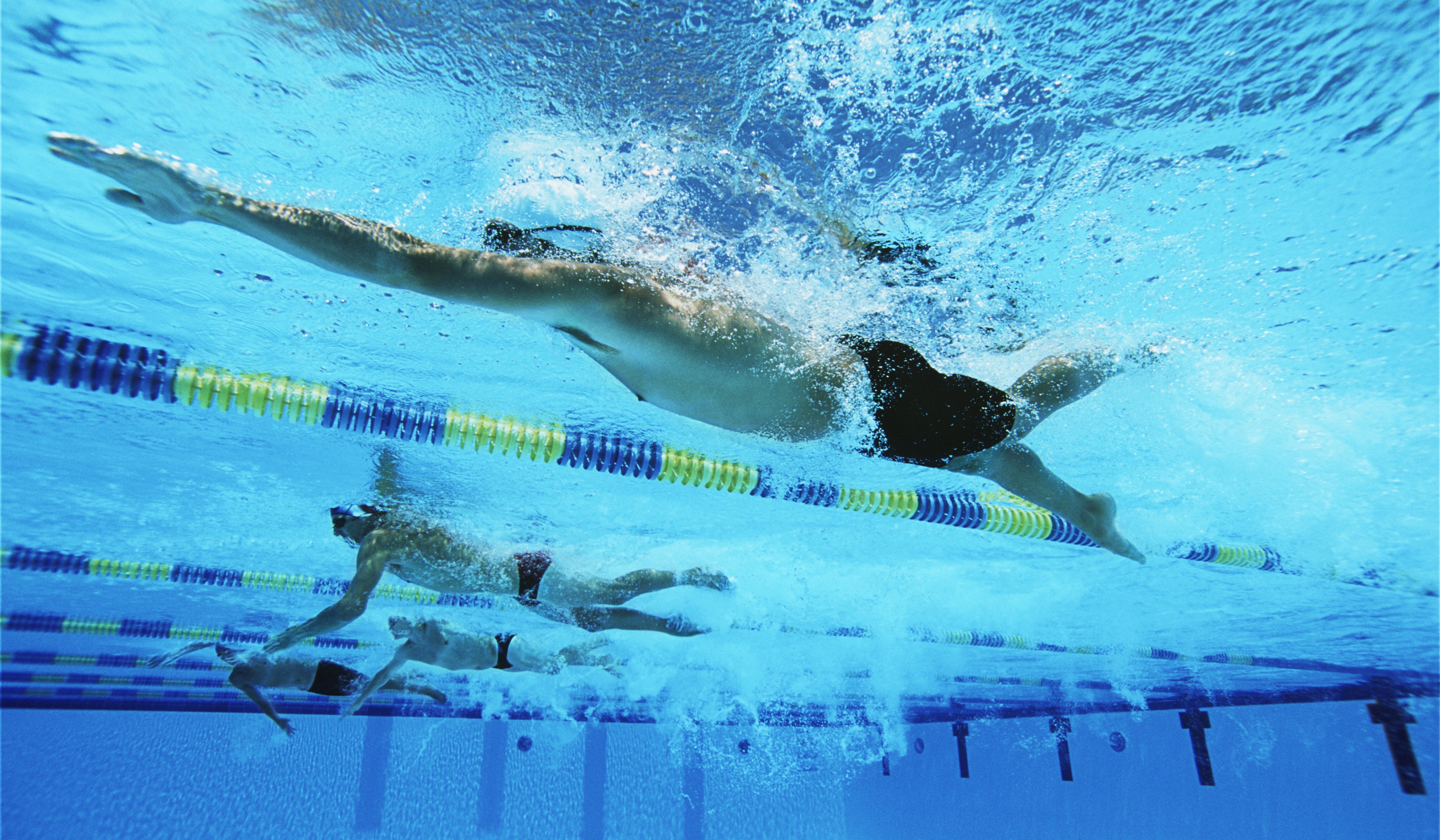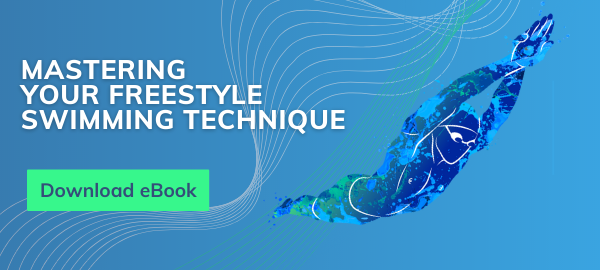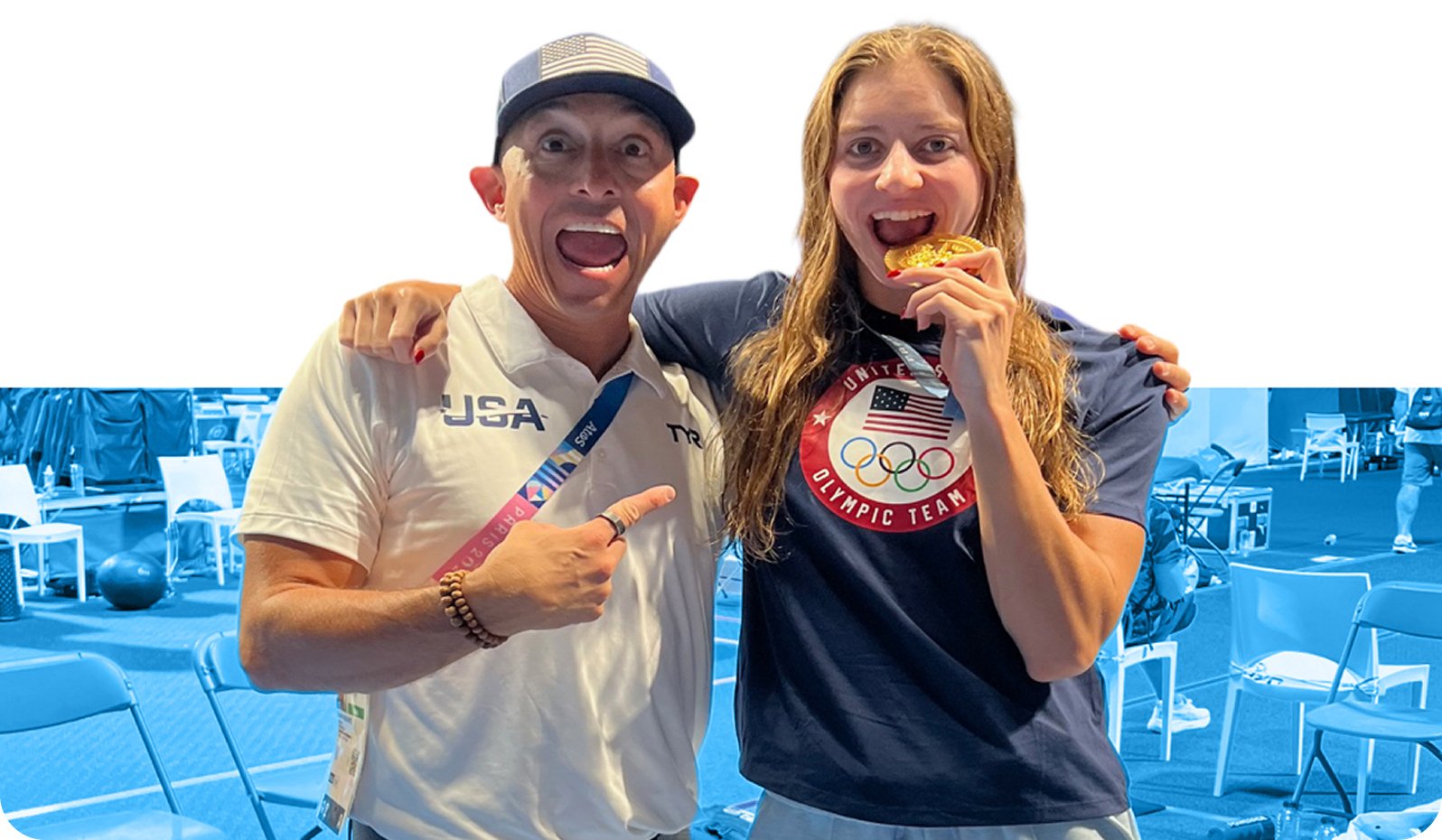Are you ready to take your freestyle swimming to the next level? With our blueprint on how to swim freestyle faster, we summed up the most important tips and tricks to improve your freestyle technique, body position, turns, kicking and underwaters.
With countless different YouTube channels, coaches’ opinions and blog posts out there giving us conflicting instructions on how to do it best, we thought it would be useful to write up our own blueprint with essential tips for faster freestyle swimming. Based on our own profound knowledge at Tritonwear, and years of coaching and working together with Olympic-level swimmers, our freestyle swimming guide will point you in the right direction.
But don’t forget, there is no one uniform stroke style in freestyle swimming. With competition distances ranging from 50 meters, all the way to 25 kilometres (and even more), it’s impossible to define one perfect style or technique that fits every swimmer. But there are certain tips and tricks that apply to every freestyle swimmer, no matter the stroke style. And that’s exactly what we are going to focus on in our freestyle guide.
Without further ado, let’s jump into the blue(print).
The Different Stroke Styles in Freestyle Swimming
The hip-driven freestyle is the go-to technique for swimmers that are swimming longer than 200 meters. With the hip-driven style, you stretch and keep your arm and your hand all the way in the front of your body for a little longer than normal before starting the catch phase of your next stroke. Because you are generating more power and extending your catch with this style, you automatically cause more hip rotation. Despite using fewer strokes with this style, you are generating more forward propulsion by increasing your power through the hip rotation. Generally, high-level swimmers, are swimming at stroke rates between 55 and 75 strokes per minute with the hip-driven style. A strong six-beat freestyle kick is very important to be a faster hip-driven swimmer.
With the shoulder-driven freestyle technique, your forearm is released much quicker from the surface of the water because your entry hand catches and extends much quicker than with the hip-driven style. With the should-driven style, which is considered less powerful than the hip-driven style, the rotation is coming from the shoulders instead of the hips. Despite being considered a less powerful style, it enables swimmers to swim at a much higher stroke rate and therefore move at a higher speed for a short duration. Due to the very exhausting high stroke rate of this style, in professional swimming the shoulder-driven freestyle technique is only used for 50- and 100-meter sprint races. In some cases also for a 200-meter race.
The third common stroke style is a hybrid style between the shoulder-driven and the hip-driven style. This style is often used by 200- and 400-meter swimmers. Swimmers using the hybrid style only breath to one side and thus rotate with both their hips and their shoulders.
The Perfect Freestyle Body Position
The rule of thumb says – for every 2 centimetres you lift your head, your hip sinks 5 centimetres. A low-laying hip means more water resistance while swimming freestyle. Establishing a proper freestyle body (and especially head) position can therefore drastically improve your stroke. Learning how to swim with a proper body position can lead to significant improvements in speed and efficiency.
In order to immediately benefit from a better body position, aim to swim downhill. Always put a little pressure on your head and chest and push them down a little while swimming. This will help keep your hip on the water surface and leads to less water resistance. Also always remember to flex your abs and butt muscles while swimming freestyle. This might be exhausting in the short-run, but will lead to a significant improvement of your freestyle swimming in the long run.
Breathing Patterns
The fastest way to sprint freestyle is without taking a breath at all because the motion which is required and caused by taking a breath increases the frontal drag and slows down the stroke rate. That’s why in sprint races like the 50 freestyle swimmers only take one or a maximum of two breaths. But unfortunately, not breathing at all is only an option for the 50-meter races and not for any other race out there.
While breathing comes naturally for most sports, swimmers really have to think about when and how to breathe and how it may affect their stroke. There are two different types of breathing options swimmers have. The bilateral breathing pattern and the two- or four- or six-stroke breathing patterns. The bilateral breathing pattern
is the best option if you want to maintain an even stroke and if you want to improve your technique and mechanics on both sides of your body. However, breathing bilaterally increases the time between breaths by 50% and thus leads to a huge decrease in total oxygen flow while swimming compared to the two-stroke breathing pattern.
In order to swim freestyle faster and more efficiently, we recommend adding bilateral breathing patterns into your training routine (for warm-up, aerobic sets or cooldown) but not into your moderate and hard distance and mid-distance sets and fast swimming. By switching to one-sided breathing you will be able to increase the total oxygen flow and perform better for a longer duration.
A More Efficient Freestyle Kick
If you watch any top-level freestyle race, you will not see a single swimmer with a slow kick. Even the top long-distance swimmers like Katie Ledecky are maintaining a steady and strong kick throughout the entire race. Despite the evidence that a great kick is inevitable, many coaches (and swimmers) don’t emphasize the importance of a proper kick in freestyle swimming enough.
Having a solid and consistent freestyle kick will help you become a better swimmer overall by adding great propulsion to your stroke, by giving you a killer body position in the water and by keeping your stroke together even when your arms get tired towards the end of the race.
Here are 4 tips on how you can improve your freestyle kick in just a few weeks:
- Work on your ankle strength by incorporating skipping rope workouts into your warmup and dryland routines. It’s a low-impact way to quickly develop strength in your ankles and calves.
- Improve your ankle flexibility so you can catch more water with your foot and achieve an early vertical ankle which will allow you to push more water backwards and propel yourself forward. If you have low-mobility ankles, try adding the ankle rocker stretch and ankle rotations to your warm-up and dryland routines.
- Do a lot more kicking in training. Unfortunately, there is no substitute for freestyle kicking. So you just have to work on your kick in the pool by actually kicking. We recommend adding at least 15-20 minutes of (high and low intensity) kicking to every pool session.
- Balance out your kick by focusing on kicking up and down! Most swimmers only focus on the downward kick but not on the upward kick. Next time you have a kicking set, think about this and actively kick up as well. It will be exhausting in the beginning, but it will make you faster.
Fast Flip Turns
You can improve your freestyle times by a lot, and yes, we actually mean
a lot, by doing just a couple of small things differently than before.
Instead of decreasing your speed when you are about to go into a wall f
or a flip turn, accelerate and approach the turn with the highest possible speed. Because the more speed you carry into your flip turn, the faster you are going to be able to rotate and push off the wall. Next time you go for a swim, try doing this a couple of times. You will feel a big difference – guaranteed.
Now that you know that accelerating into the wall is important, you nee
d to cut that “obligatory” quick breath before the turn. Because that’s only going to slow you down as well. This is a quick fix if you are consistent about it in training. Always cut the last breath right before your flip turn. It will help you swim into the wall faster and it promotes a much better chin placement.
Another quick fix and time saver is your chin placement before and while actually doing the flip. Don’t look up and lift your chin to look at the wall. Instead, keep your chin tucked and thus turn quicker and with less water resistance.
Optimizing Underwater Work
Last but not least, your streamline also plays an essential role in swimming faster freestyle. The fastest moment you will have in the pool is right after you push off that wall. Therefore, you need to maximize the potential of the few meters you spend in a streamline position after the push off. Keep your head between your upper arms and tuck your chin. Place your hands above each other and learn to surface as soon as your underwater speed decreases.
After your push off, it’s time to add some quick, powerful dolphin kicks to propel you off that wall. Make sure the dolphin kick movement comes from your chest and your legs go down when your hips do. Your knees should be slightly bent during this motion. Your legs should follow your hips when they go up. The knees extend at this point. Now add some power and execute your dolphin kick. Add 3-5 dolphin kicks after every turn, before you break out on the surface.
After you execute proper dolphin kicks, it’s time to do a perfect breakout on the water surface. Be sure to not take a breath with your first stroke and time your first stroke so that you don’t lose speed. If you take your first stroke too early, or too late, you will lose a lot of speed that you just gained from the push-off and the dolphin kicks.
We recommend you practice your streamline and underwater dolphin kicks after every turn in training. You will see great results after just a few weeks of consistently paying attention to your push-off, your dolphin kicks and your break-out.
As you can tell by reading this, there are a few essential components to a proper freestyle technique. By working on each of those components and by implementing our tips and trick into your daily training, you will be able to swim freestyle faster and more efficiently. Always remember to not only train hard but to also train smart. Because sometimes very few changes can make a big difference.


%20(1).png?width=720&name=Blueprint%20for%20faster%20freestyle%20%20(800%20x%20400%20px)%20(1).png)



.png)
.png)